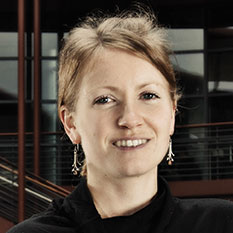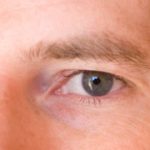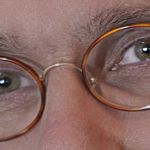Susannah Fox: In survey data, watching web and healthcare culture shift
In 2002, Susannah Fox and her colleagues at the Pew Internet & American Life Project first identified “the broadband difference.”
They discovered, through simple phone surveys, that people with access to high-speed connections took part in about seven online activities each day, whereas their counterparts subjected to the beeps and buzzes of a dial-up wait took part in only three. Unsurprisingly, those who faced lower barriers to use were more likely to turn to the web to answer questions or solve problems.
Accordingly, the growth of broadband between 2002 and 2007 is identified as the first of three major revolutions in the life of the web – and yet, as Fox points out, many of us experienced the indications of that revolution almost a decade earlier.
“If you looked, you could see it,” she says now. “It’s like the famous quote: ‘The future is already here – it’s just not very evenly distributed.'”
As it happens, Fox is an expert at this kind of prediction – finding the future in the now. Since writing the very first report published by Pew Internet in 2000, she has continued to study the social impacts of the Internet as they relate to health, her work tracking the growth of the web from a slow and static information vending machine to the always-with-you information appliance it is now. Here’s a taste of what she’s thinking about these days:
Mother as bellwether: “When I think about the future of healthcare, I look at what moms of really sick kids are doing. Women, our data shows, are leading the way in terms of the social revolution online. They’re the most avid users of social networking sites. They’re very often the gatekeepers of information for their families. And they’re in the demographic group; the current generation of moms is a very wired generation. You place that kind of person in the crucible of a rare or serious condition in her child, and you will see her transform herself into a superhero.
What I’m seeing them doing now, and I can very easily see this expanding in the future, is continuing to turn to health professionals for diagnosis, treatment and the technical aspects of healthcare, but increasingly turning to each other for the other aspects of health that we all know actually make up our daily lives. So learning from each other and not just from institutions.”
The digital divide: “Despite the growth of mobile, there are still groups that are significantly less likely to be online. Only about half of people living with disability have access to the Internet, and that’s independent of age and income. The question is: Who or what can fill in the blanks?”
The growth of self-tracking: “In 2010, we added a new survey question: Have you ever tracked your weight, diet or exercise routine online? And then we posed a secondary question: Have you ever tracked any other health indicators or symptoms online? Nationally, 1 in 5 Internet users answered yes to one of these. If you unpack it, the real number could be even higher. That’s a section of the survey I’m hoping we can expand. We don’t know exactly what’s going on there.”
Social media as research tool: “A big part of my process is to actually participate in social media. I just realized I’ve been blogging on e-patients.net for 5 years, which is quite a milestone. I feel like you can’t just rely on the popular or academic presses or conferences to be your megaphone anymore. I’ve gained so much from blogging and being open about the research I’m doing. And it has led to collaboration, making my research even stronger.”
We’re honored to have Fox on our advisory board and are thrilled she’ll be joining us as a keynote speaker at Medicine X 2012.







[…] a recent Q&A on the Stanford Medicine X blog, Susannah Fox, an associate director at the Pew Internet & […]